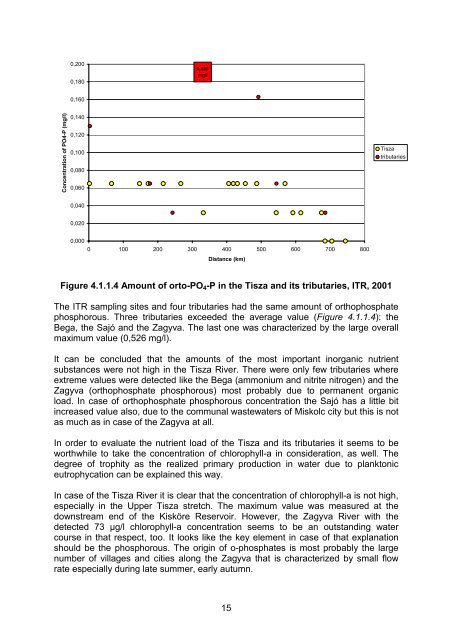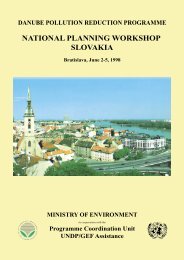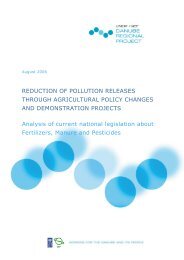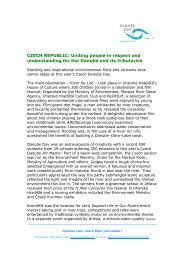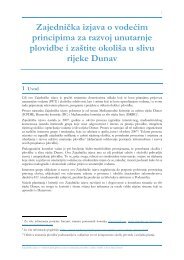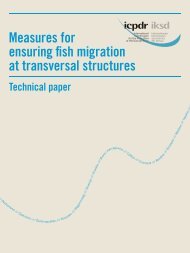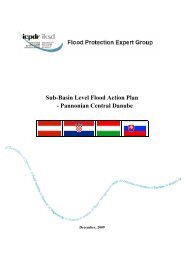Final Report - ICPDR
Final Report - ICPDR
Final Report - ICPDR
Create successful ePaper yourself
Turn your PDF publications into a flip-book with our unique Google optimized e-Paper software.
0,200<br />
0,180<br />
0,586<br />
mg/l<br />
0,160<br />
Concentration of PO4-P (mg/l)<br />
0,140<br />
0,120<br />
0,100<br />
0,080<br />
0,060<br />
Tisza<br />
tributaries<br />
0,040<br />
0,020<br />
0,000<br />
0 100 200 300 400 500 600 700 800<br />
Distance (km)<br />
Figure 4.1.1.4 Amount of orto-PO 4 -P in the Tisza and its tributaries, ITR, 2001<br />
The ITR sampling sites and four tributaries had the same amount of orthophosphate<br />
phosphorous. Three tributaries exceeded the average value (Figure 4.1.1.4): the<br />
Bega, the Sajó and the Zagyva. The last one was characterized by the large overall<br />
maximum value (0,526 mg/l).<br />
It can be concluded that the amounts of the most important inorganic nutrient<br />
substances were not high in the Tisza River. There were only few tributaries where<br />
extreme values were detected like the Bega (ammonium and nitrite nitrogen) and the<br />
Zagyva (orthophosphate phosphorous) most probably due to permanent organic<br />
load. In case of orthophosphate phosphorous concentration the Sajó has a little bit<br />
increased value also, due to the communal wastewaters of Miskolc city but this is not<br />
as much as in case of the Zagyva at all.<br />
In order to evaluate the nutrient load of the Tisza and its tributaries it seems to be<br />
worthwhile to take the concentration of chlorophyll-a in consideration, as well. The<br />
degree of trophity as the realized primary production in water due to planktonic<br />
eutrophycation can be explained this way.<br />
In case of the Tisza River it is clear that the concentration of chlorophyll-a is not high,<br />
especially in the Upper Tisza stretch. The maximum value was measured at the<br />
downstream end of the Kisköre Reservoir. However, the Zagyva River with the<br />
detected 73 µg/l chlorophyll-a concentration seems to be an outstanding water<br />
course in that respect, too. It looks like the key element in case of that explanation<br />
should be the phosphorous. The origin of o-phosphates is most probably the large<br />
number of villages and cities along the Zagyva that is characterized by small flow<br />
rate especially during late summer, early autumn.<br />
15


